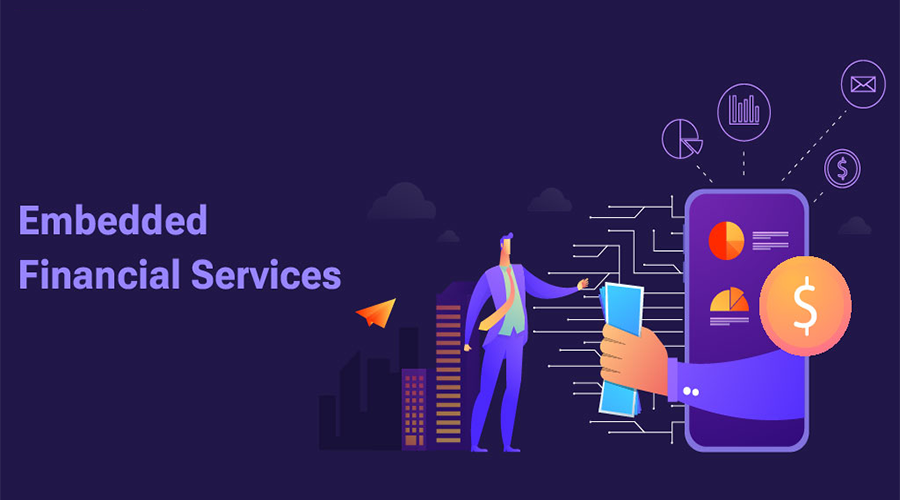
Fintech 101: Embedded Financial Services Explained
Posted on August 21, 2024
In the rapidly evolving world of financial technology, embedded finance has become a game-changer. It’s more than just a buzzword; embedded finance reshapes the way consumers and businesses interact with financial services by integrating them seamlessly into non-financial platforms. If you’ve ever used a ride-sharing app that lets you pay in-app or a retail app that offers instant financing, you’ve experienced embedded finance. This blog will dive into the basics of embedded financial services, its impact on industries, and why it’s the future of finance.
What is Embedded Finance?
Embedded finance refers to the integration of financial services into non-financial platforms, applications, or services. Rather than needing to visit a bank, download a separate financial app, or use a third-party service, consumers can access banking, payments, lending, insurance, and other financial solutions directly within the platform they’re already using. By embedding finance, companies enable customers to transact and access financial services effortlessly, enhancing user experience and improving engagement.
For example, when a retailer offers “buy now, pay later” (BNPL) options directly at checkout, they’re providing embedded finance. The customer can purchase credit without leaving the website, and the entire process feels like a natural part of their shopping experience.
Key Components of Embedded Financial Services
Embedded financial services can take many forms, but they generally include:
- Embedded Payments: Allows users to make payments directly within a non-financial app. Examples include paying for a meal in a food delivery app or sending money to friends through a social media platform.
- Embedded Lending: Offers financing options, like BNPL or small business loans, directly at the point of purchase, making it easy for customers to access credit without applying for a loan separately.
- Embedded Insurance: Integrates insurance options within a purchase flow, such as trip protection on travel booking websites or smartphone insurance in an electronics retailer.
- Embedded Investments: Some platforms, especially in e-commerce or fintech, offer investment options to customers within their services, allowing users to invest in stocks, ETFs, or crypto directly from the app.
Why is Embedded Finance Important?
Embedded finance is making financial services more accessible, seamless, and personalized. Here’s why it matters:
- Improved User Experience: By eliminating the need to switch between platforms, embedded finance streamlines transactions and reduces friction, creating a smoother user experience.
- Increased Accessibility: It enables people who may not traditionally engage with financial services to access them easily. For example, small business owners can obtain financing through the platforms they use for inventory or sales, without needing to go to a bank.
- New Revenue Streams: Non-financial businesses can earn additional revenue by integrating financial services. For instance, an e-commerce site offering installment payments can earn commissions from financial partners.
- Enhanced Customer Loyalty: Embedded finance can increase brand loyalty. When customers have a seamless experience and can access everything in one place, they’re more likely to return.
The Benefits of Embedded Finance for Businesses
- Data-Driven Insights: Companies can access valuable financial data to better understand customer behavior, preferences, and spending patterns, leading to more tailored offerings.
- Increased Customer Lifetime Value: By offering financial services directly, companies can encourage repeat purchases and longer-term customer relationships, adding value to their core offerings.
- Differentiation: For companies in highly competitive markets, embedded finance can be a significant differentiator, helping them stand out by offering convenient, value-added services.
- Cost Savings: Partnering with fintech providers for embedded finance solutions can be more cost-effective than developing financial capabilities in-house. Many fintech providers offer white-label solutions that make integration faster and cheaper.
Examples of Embedded Finance in Action
- Uber: In-app payments make the entire experience seamless, and drivers can access earnings directly through the app, sometimes even accessing instant payouts.
- Shopify: Through its Shopify Capital program, Shopify offers loans to its small business users, providing capital based on sales data without requiring a lengthy application process.
- Apple: Apple’s BNPL service, Apple Pay Later, allows customers to split purchases into installments, right from their Apple Wallet.
- Amazon: Amazon offers embedded insurance options and BNPL through third-party providers like Affirm, making it easy for customers to access credit at checkout.
How to Integrate Embedded Finance: Key Considerations
For businesses considering embedded finance, there are some critical factors to keep in mind:
- Regulatory Compliance: Financial services are heavily regulated. Companies must ensure they comply with relevant laws and regulations, including data privacy and anti-money laundering requirements.
- Data Security: Embedded finance involves handling sensitive financial data, so it’s essential to implement robust security protocols.
- Selecting the Right Fintech Partner: Working with a reputable fintech provider is crucial to ensure a smooth and compliant integration.
- User Education: Providing financial services within a non-financial platform may be new for customers. Clear communication and support can help users feel comfortable using embedded finance options.
The Future of Embedded Finance
Embedded finance is projected to continue growing as more industries realize its benefits. Sectors like e-commerce, healthcare, travel, and real estate are particularly ripe for transformation. As fintech capabilities advance, we may see more complex services being embedded, like wealth management tools or multi-currency support in e-commerce.
Moreover, artificial intelligence (AI) and machine learning (ML) are likely to further personalize embedded financial services. Imagine an e-commerce platform that suggests personalized payment plans based on your transaction history or spending habits.
Conclusion
Embedded finance is revolutionizing the financial services landscape by making financial products more accessible and convenient for consumers while opening new growth opportunities for businesses. By understanding and leveraging embedded finance, companies can build stronger, more engaging, and profitable relationships with their customers.
As embedded finance continues to evolve, it will not only redefine consumer expectations but also shape the future of the financial services industry itself. Whether you’re a business looking to integrate these services or a consumer benefiting from them, embedded finance is poised to become an integral part of our daily lives.
